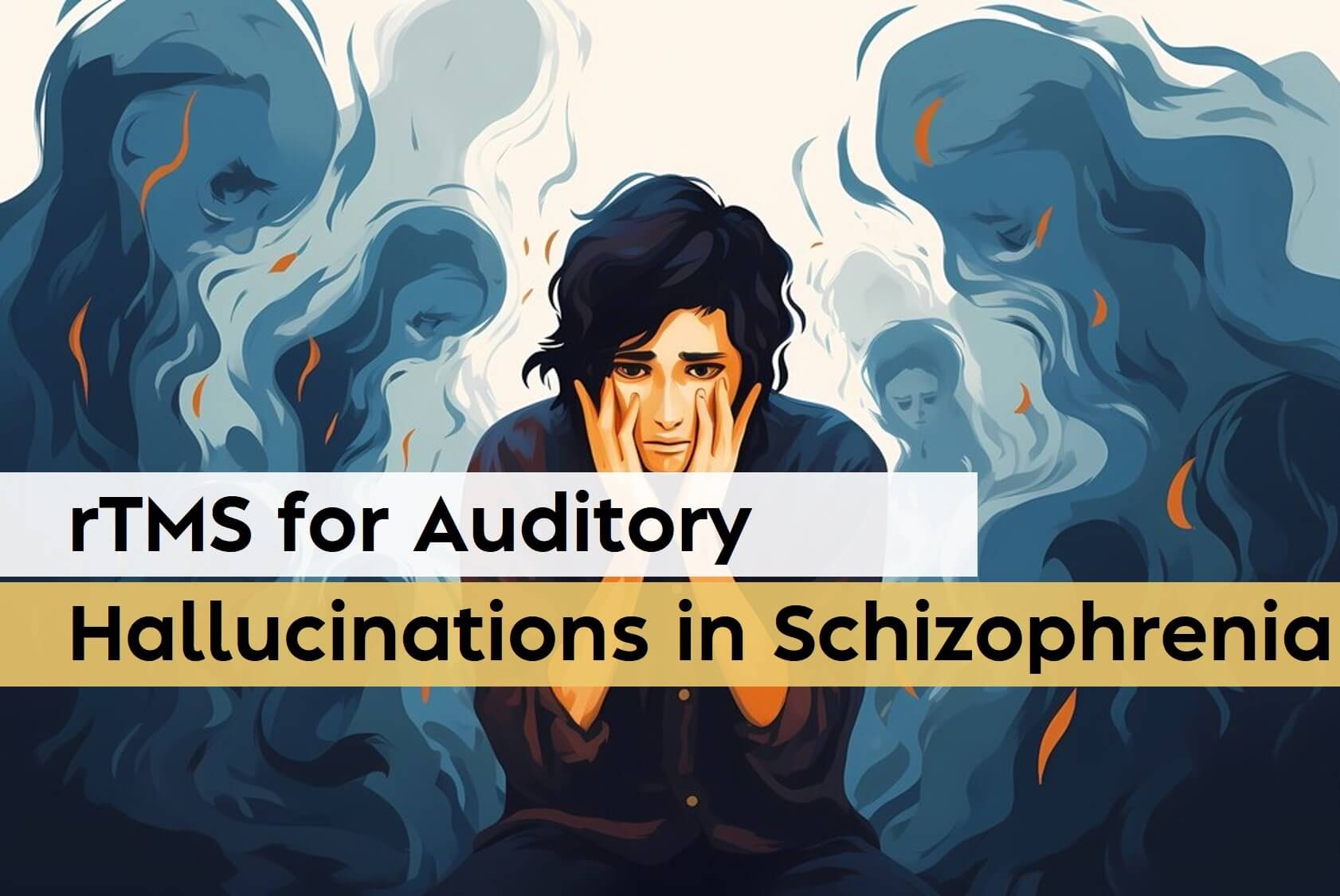Silencing the Voices: Role of rTMS in Auditory Hallucinations in Schizophrenia
Auditory verbal hallucinations (AVH) represent a cardinal symptom of Schizophrenia. With a worldwide prevalence of 1 %, AVH’s can pose a serious challenge to patients and physicians treating Schizophrenia.
Auditory hallucinations are of the following types:
(1) Verbal Hallucinations: In this case, the patient reports hearing voices of humans/individuals, who are either talking between themselves or directly with the patients.
(2) Non- Verbal Hallucinations: The nature of hallucinations is sound, which can be mechanical or natural in nature. No form of speech content is reported by the patient.
Additionally, verbal hallucinations are classified into:
- 1st person voices
- 2nd person voices
- 3rd person voices
Usually for most people with schizophrenia, these hallucinations are responsive to anti-psychotic medicines. But in a select few, these voices do not tend to respond even to high dose medicines, including clozapine.
In such resistant cases, there are two treatment options:
The ideal work flow in patients with resistant auditory hallucinations should be as follows:
- High dose (maximum tolerable) of anti-psychotics (two different classes)
- Clozapine trial unto 300 mags
- Electroconvulsive Therapy: unto 12 sessions
- Repetitive Transcranial Magnetic Stimulation (up to 40 sessions)
This blog post is meant to discuss the role of Repetitive Transcranial Magnetic Stimulation in the treatment of resistant AVH.
Repetitive Transcranial Magnetic Stimulation is a non-invasive method of brain stimulation designed to target specific brain regions involved in the pathogenesis of auditory hallucinations.
It works by generating a magnetic field outside the brain which in turn causes the underlying brain tissue to change its activity
In resistant hallucination, the auditory cortex is hyperactive.
Thus, rTMS is used to reduce the hyperactivity of the underlying auditory cortex and thus reduce the severity and duration of AVH’s /voices.
rTMS as a treatment option
rTMS has been around as a treatment option since more than 20 years. The strengths of this treatment include:
- No anaesthesia
- No major side effects like memory loss
- Easy to administer
However, the downside of rTMS is:
- More number of sessions required
- Transient nature of effect
- Possibility of add on rTMS sessions
- Cost effectiveness of therapy
Let us review the literature on the effectiveness of rTMS for Schizophrenia
- Effect size comparable to that in studies of clozapine vs. typical antipsychotics
- The effect (after stopping treatment) seems to sustain for ~4 to 6 weeks
- Effect of reinstitution of TMS following ‘relapse’ is mixed
- Invariably augmenting strategy (no effect on delusions, other FRS)
- Evidence restricted for treatment resistant hallucinations
Source/s: Banner image by Freepik.com


